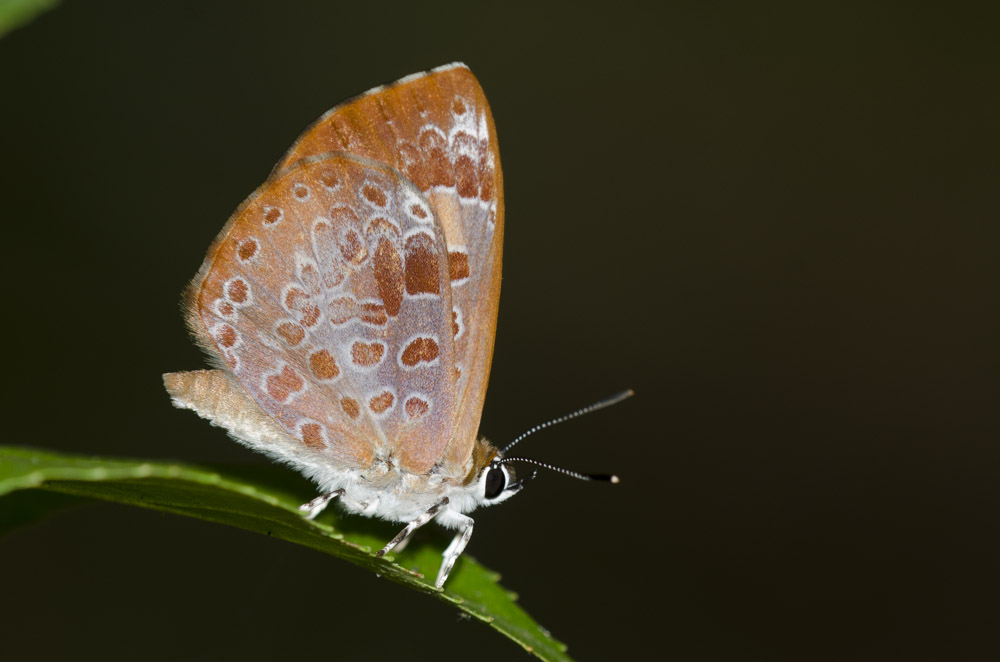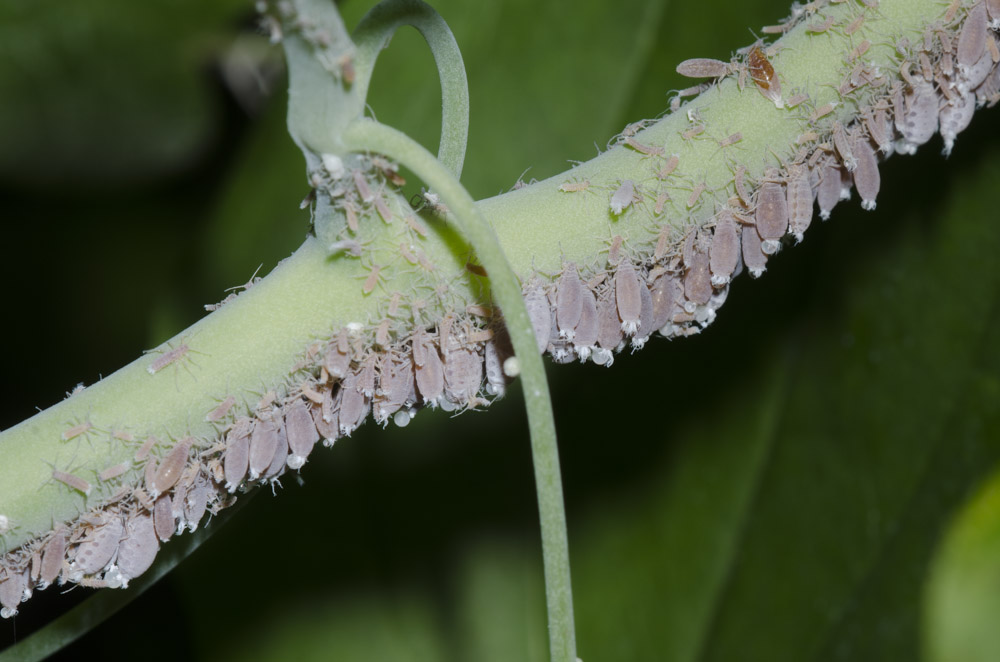Recently, photographer Bryan E. Reynolds earned a long-sought set of photos of the elusive harvester butterfly, North America’s only carnivorous butterfly.
My November 2017 blog, Fun with Harvester Butterflies, detailed my first encounter with a colony of harvester butterflies (Feniseca tarquinius), North America’s only carnivorous butterfly, and a relatively elusive species. One of the behaviors that I witnessed, but was unable to capture on camera, was a female ovipositing in an aphid colony—a behavior that provides newly-hatched caterpillars with plenty of food. After this wonderful experience, I’ve been keeping my eye out for this unusual butterfly and keeping my camera ready in the hope of documenting this ovipositing behavior.

On June 7, 2019, the next stage of this saga occurred—when I was photographing butterflies in the Lexington Wildlife Management Area in central Oklahoma. This preserve is close to where I live, so I’m very familiar with it and spend many hours exploring its 10,000-plus acres. I was searching for subjects near a lake that has a trail tracing part of its circumference.
In one particularly thick, deeply shaded section of woods, a small, fluttering butterfly caught my eye. I recognized at once it as a harvester—and by the way it was hovering and swirling around a vine, I got the sense it was a female looking for a place to lay eggs. I continued to watch as she flew higher and landed on the vine. She then curled her abdomen and laid an egg—near several tiny aphids. Unfortunately, all of this happened several feet above me and directly over a large tangle of impenetrable vegetation, so I couldn’t get any photos. I was hoping she would get lower, but instead she proceeded deeper into the forest and out of sight. I waited for her to reappear, but to no avail. I was disappointed, but hopeful that I’d get another opportunity.
Soon after my sighting, my friend and colleague Nick Grishin was visiting. He’s a Professor of Biochemistry at the University of Texas Southwestern in Dallas, Texas. He specializes in sequencing the DNA of butterflies. He was interested in checking out the newly dubbed “Harvester Colony.” We scoured the area, but saw no adults. However, Nick found one larva among the aphids.

On June 26, I went back to check the status of the colony. By the time I got there, I had already been photographing for several hours and I was exhausted from the heat. But I was hopeful that I would find something interesting. I hiked to the colony and immediately noticed two female harvesters swirling in that now familiar and distinctive flight. This time, they were low enough to reach with my camera. One of the butterflies landed and I started firing away. She took flight, but to my astonishment, she landed even closer to me! My heart was pounding as I fired off frame after frame. It was remarkable to see this behavior through my macro lens. The butterfly worked the vine, landing and curling her abdomen and then popping out an egg. All the while, I kept working hard to get photos while standing knee-deep in poison ivy. I was soaked in sweat and mosquitoes were pestering me because my repellent was wearing off. I was exhausted, but I was having the time of my life. After several more photos, she moved into deeper woods and by this time, I was ready to get back to my vehicle for a cold drink.

As I dragged myself along the return trail, something made me stop and look up. About one foot from my face was one of the freshest harvesters I’ve ever seen. It was perched on a leaf that was in a sunspot in otherwise deeply shaded woods. To avoid flushing it, I slowly backed up and started to fire off frames. I completely forgot about my fatigue as I worked this stunning butterfly. It was very cooperative and allowed me to get both ventral sides. After several frames, the sun went behind a cloud and as I was looking through my viewfinder, the butterfly opened up showing its magnificent upper side. I couldn’t believe it—this was the icing on the cake of what was already a spectacular day.
It’s been exciting photographing this fascinating species, and I’ve been honored to witness and document its behavior. I also want to extend my thanks to Nick and to the experts who helped me identify the non-butterfly subjects in my photos. The host aphids were identified by Natalie Hernandez, entomologist and aphid specialist for the U.S. Department of Agriculture’s (USDA) Animal and Plant Health Inspection Service (APHIS), as woolly maple aphids (Neoprociphilus aceris). And the host plant has been identified as bristly greenbrier (Smilax tamnoides) by Amy Buthod of the University of Oklahoma.
Further Reading
Read Bryan’s previous post about Harvesters.
Check out Bryan’s story of a rare hybrid butterfly sighting.
Learn more about the wide variety of butterflies native to North America!



